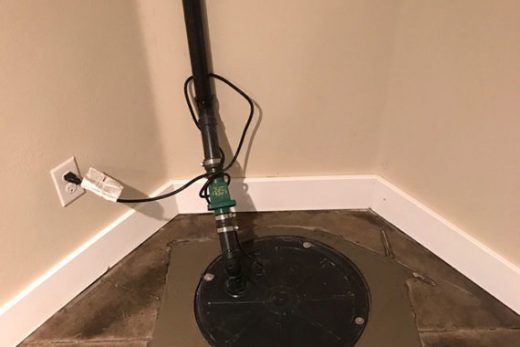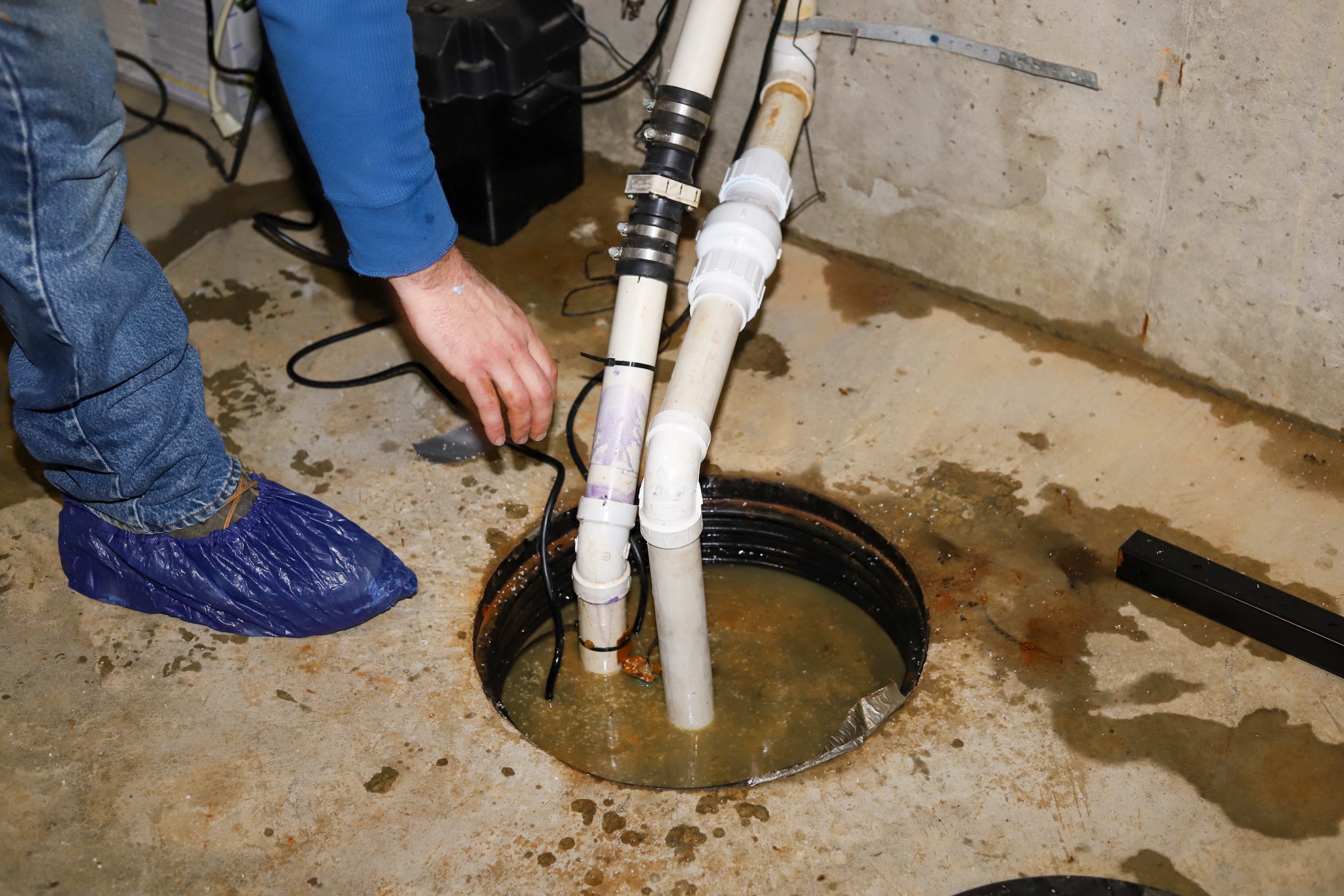Effortless Methods for Servicing a Sump Pump
Effortless Methods for Servicing a Sump Pump
Blog Article
The publisher is making several good pointers on Steps to Cleaning Your Sump Pump Properly overall in this article in the next paragraphs.

Sump pumps are essential components in several homes, particularly in locations vulnerable to flooding or too much dampness. They assist prevent water damage by efficiently getting rid of excess water from cellars or crawl spaces. However, like any other home appliance, sump pumps call for routine maintenance to guarantee they work properly when required one of the most. Cleaning your sump pump is a crucial part of its maintenance, and understanding exactly how to do it properly can save you from pricey repair services and potential disasters.
Introduction
Preserving a tidy sump pump is important for its proper functioning and longevity. Overlooking this essential task can lead to blockages, breakdowns, and ultimately, water damage to your home. As a result, discovering how to clean up a sump pump is crucial for homeowners who rely upon these tools to maintain their basements completely dry and secured.
Indications of a Dirty Sump Pump
Understanding when your sump pump requires cleaning is important for avoiding prospective malfunctions. Some usual signs that show a dirty sump pump consist of strange noises during operation, lowered water flow, and noticeable particles in the pit. If you observe any of these symptoms, it's essential to cleanse your sump pump immediately to prevent any more issues.
Planning for Cleansing
Before you begin cleaning your sump pump, it's vital to take some security precautions. Beginning by turning off the power to the pump to prevent any electric accidents. Furthermore, wear proper safety equipment, such as handwear covers and safety glasses, to shield yourself from dust, debris, and possible virus.
Recognizing the Sump Pump
Before diving right into the cleansing process, it's necessary to have a standard understanding of just how a sump pump works. Usually set up in a pit or basin listed below the cellar flooring, a sump pump includes numerous essential parts, consisting of a pump, a float button, and a discharge pipeline. When water gathers in the pit, the float button activates the pump, which then pumps the water out via the discharge pipe, away from the structure's foundation.
Step-by-step Overview to Cleaning Up a Sump Pump
Shutting down the Power
Begin by disconnecting the power supply to the sump pump to stop any mishaps while cleaning.
Looking For Appropriate Performance
Prior to re-installing the pump, do a quick test to ensure that the float button activates the pump correctly. Pour some water into the sump pit and observe the pump's operation. If whatever is functioning appropriately, you can rebuild the pump and reconnect the power supply.
Getting Rid Of Particles and Dust
Make use of a pail or an inside story to get rid of any kind of noticeable particles, dirt, or sediment from the sump pit. Dispose of the debris effectively to prevent it from obstructing the pump or the discharge pipeline.
Cleaning the Pump and Float Switch
As soon as the pit is clear of debris, carefully eliminate the pump from the pit. Evaluate the pump and the float button for any type of signs of damage or wear. Use a soft brush or cloth to clean up the surfaces and eliminate any collected grime.
Flushing the System
After cleaning the pump and float switch, flush the sump pit with tidy water to eliminate any kind of staying dust or debris. This will certainly help make sure that the pump operates efficiently and efficiently.
Upkeep Tips to Maintain Your Sump Pump Clean
Along with regular cleaning, there are several upkeep suggestions you can comply with to keep your sump pump in optimum problem:
Final thought
Cleaning your sump pump is an important facet of its maintenance and ensures that it runs efficiently when you need it one of the most. By adhering to the actions detailed in this guide and incorporating routine upkeep right into your regimen, you can extend the lifespan of your sump pump and protect your home from water damages.
6 STEPS ON HOW TO CLEAN A SUMP PUMP PROPERLY
UNDERSTANDING SUMP PUMPS
Your sump pump plays a crucial role in protecting your home by managing and removing excess water. It primarily functions as a “shield”, guarding your basement against the damaging effects of water accumulation. The pump is housed in a sump pit in the lowest part of your basement, and its job is to pump out any water that collects there.
During heavy rainfalls or when snow melts rapidly, water can infiltrate your basement, posing potential risks like flooding, structural damage, and harmful mold growth. Here, the sump pump springs into action, pumping out the intruding water and directing it away from your home.
SAFETY FIRST
Before cleaning, remember to prioritize safety. Disconnect the sump pump from the power source to prevent any accidental electric shocks. Also, wear sturdy gloves to protect your hands from any sharp or dirty components within the pump.
REMOVE THE SUMP PUMP
After ensuring your safety, the next step is to remove the sump pump from its pit. Doing this might require careful maneuvering as you don’t want to damage any pump components. Once removed, clean the sump pit to remove any accumulated debris or sludge.
INSPECT THE PUMP
Inspect the pump for any visible signs of wear or damage. Check the power cord, float switch, and impeller housing. If any components look worn out or damaged, consider replacing them to ensure optimal performance.
CLEAN THE PUMP
Thoroughly clean the pump with warm, soapy water. Make sure to rid it of any dirt, gravel, or other debris that might impede its performance. You can use a toothbrush to clean the small, hard-to-reach parts of the pump.
REINSTALL THE SUMP PUMP
Reinstall the pump into the sump pit Make sure it’s positioned correctly to remove the water effectively Once it’s back in place, reconnect it to the power source TEST THE PUMP
Finally, pour some water into the pit to ensure the pump works correctly. It should start automatically and begin pumping out the water; if it doesn’t, check the power source and the positioning of the pump.
Remember, while cleaning your sump pump is an essential part of home maintenance, hiring a professional plumber for a thorough inspection and cleaning at least once a year is also important. This will ensure that your pump is in optimal condition, ready to protect your home from potential water damage.
BEST PRACTICES FOR CLEANING SUMP PUMP DISCHARGE PIPES
Regular Inspection: Regularly inspect your discharge pipes, especially during heavy rainfall or snowmelt periods. Look for any signs of blockage or damage. Early detection of problems can prevent serious issues down the line. Periodic Cleaning: Over time, sediment and debris can accumulate in the discharge pipes, impeding the flow of water. Regular cleaning helps keep the pipes clear and functioning efficiently. You can use a high-pressure water jet to effectively clean the pipes. Insulation During Winter: In colder climates, discharge pipes can freeze, blocking the outflow of water. Protect your discharge pipes from freezing temperatures by insulating them with foam pipe insulation. This will ensure the sump pump can continue to discharge water even in freezing conditions. Proper Positioning: The discharge pipe should be positioned to direct water away from your home’s foundation. Improper positioning can lead to water seeping back into the basement. Ensure the pipe is long enough and angled correctly. Installation of a Check Valve: A check valve prevents water from flowing back into your sump pit after the pump has pushed it out. Installing a check valve helps maintain the efficiency of your sump pump and reduces the risk of flooding. Minimize Pipe Turns: Every curve or turn in the discharge pipe can decrease the efficiency of water flow. By minimizing turns and bends in your discharge pipe, you can increase the efficiency of your sump pump. https://www.fullspeedplumbing.com/how-to-clean-a-sump-pump-properly9999/

I stumbled upon that blog entry on Cleaning & Maintenance Tips for Your Home's Sump Pump while doing a search on the web. Liked our piece? Please quickly share it. Let someone else locate it. Thank you for being here. Don't hesitate to come visit our website back soon.
Automated Marketing Report this page